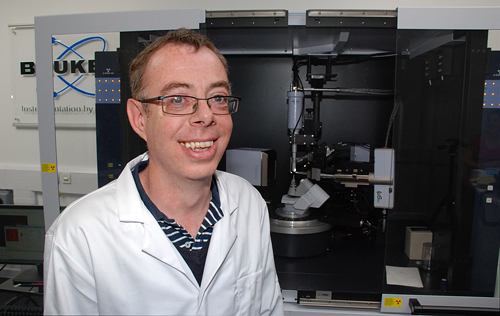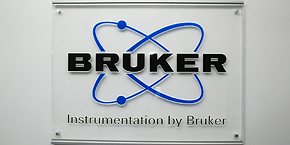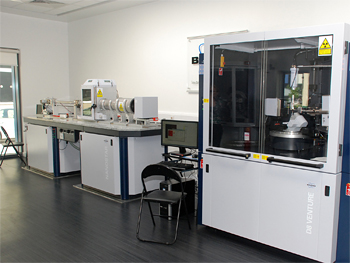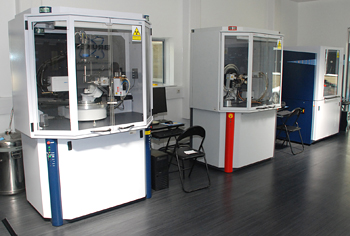£1 million investment on state-of-the-art X-ray Diffraction Lab
 Professor Craig Rice now heads Huddersfield’s X-ray Diffraction Laboratory.
Professor Craig Rice now heads Huddersfield’s X-ray Diffraction Laboratory.
Tue, 20 May 2014 09:24:00 BST
“...the diversity of our equipment means that this facility is one of the best in Europe...”
X-RAY crystallography – which enables scientists to examine the make-up of molecules in graphic detail – is increasingly vital for research, especially in key fields such as the development of new drugs. And the University of Huddersfield, after a £1 million-plus investment, now has one of Europe’s best-equipped labs. (Please watch the video to see Professor Rice in the laboratory explain how the Bruker equipment works.)
It consists of six new X-ray diffractometers, all of them serving different needs and able to produce startling images of the molecules present in a tiny crystal or, in some cases, a powder. Once, the use of X-rays to produce an analysis of molecules was a complex, time-consuming process. In some cases it could take years. Now it can be done in less than an hour.
“We definitely have one of the best facilities,” says Professor Craig Rice, the chemist who heads Huddersfield’s X-ray Diffraction Laboratory.
 The lab’s six diffractometers have all been supplied by the leading manufacturer Bruker, with whom the University has formed a partnership. The facility is now fully installed and operational. Demand is heavy, from researchers inside and beyond the University.
The lab’s six diffractometers have all been supplied by the leading manufacturer Bruker, with whom the University has formed a partnership. The facility is now fully installed and operational. Demand is heavy, from researchers inside and beyond the University.
Scientists from a wide variety of disciplines are employing X-ray crystallography and a very large proportion of articles, published in leading academic journals, depend on the molecular images it produces in order to prove their case.
 Pictured top: (left to right) Bruker Nanostar SAXS and D8 Venture X-Ray Diffractometer. Pictured below: (left to right) D8 Duo X-Ray Diffractometer, D8 powder X-Ray Diffractometer, and D8 Advance X-Ray Diffractometer.
Pictured top: (left to right) Bruker Nanostar SAXS and D8 Venture X-Ray Diffractometer. Pictured below: (left to right) D8 Duo X-Ray Diffractometer, D8 powder X-Ray Diffractometer, and D8 Advance X-Ray Diffractometer.
Pharmacy is one of the most important fields for crystallography. Professor Rice explains that the technology can be used to analyse what is known as “structure activity correlation” – the way that a drug interacts with the body.
“And if you know how a drug works then you can develop that drug further. You can hone it and make improvements without being in the dark. X-ray crystallography means you really know what is going on.”
Present-day X-ray diffractometers, such as the six installed at the University of Huddersfield, operate automatically and have vastly simplified the process of molecular analysis. The greatest challenge to scientists remains the production of a crystal of an enzyme or protein– it is a process that can take many months.  An alternative is to analyses the molecular structure of a powder, which is simpler to produce, although it furnishes less information. The Huddersfield lab includes powder diffractometers.
An alternative is to analyses the molecular structure of a powder, which is simpler to produce, although it furnishes less information. The Huddersfield lab includes powder diffractometers.
“The diversity of our equipment means that this facility is one of the best in Europe,” says Professor Rice. “External visitors who have come to use it have been wowed, because the lab is utterly cutting-edge.”







